All the table’s a stage
January 31, 2012
Matchbox cars, puppets and tiny TVs star in a micro-play about a very big issue—hunger. “Dan Froot & Dan Hurlin: Who’s Hungry–Santa Monica” presents reality for those who have to choose between food and other necessities of life.
The play is staged on a 24-foot dinner table, with the audience seated on one side. Five very different real life “courses” are served in 15- to 20-minute segments, each one telling the history of a different Santa Monica homeless person.
There may be no better time to consider the problem of hunger in our own neighborhoods. In 2008, an estimated 17 million U.S. homes were deemed “food insecure” at some point, an increase of 4 million from the previous year. That rate remained statistically steady through 2010.
One way to fight hunger is with CalFresh; visit the Department of Public Social Services’ website to learn more about this benefit, a rebranding of California’s food stamps program.
“Who’s Hungry–Santa Monica” is presented by Highways, a nonprofit organization dedicated to bringing diverse cultural perspectives to Southern California.
Performances will take place at 8:30 p.m. on Friday, Feb. 3, and at 5 p.m. and 8:30 p.m. on Saturday, Feb. 4. Tickets to the tabletop play are $20 for adults and $15 for students, seniors and members. Highways’ performance space is at 1651 18th Street in Santa Monica.
Posted 1/31/12
Going big against homelessness
January 31, 2012
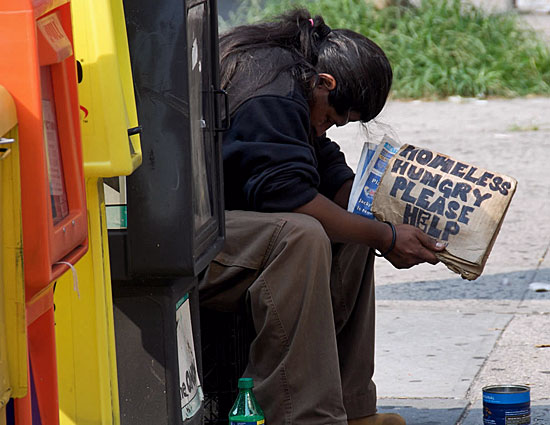
A new push to fight homelessness is underway, with county departments banding together to get the job done.
Acknowledging that solving the multifaceted problems of the nation’s largest homeless population calls for bigger and more concerted action, supervisors on Tuesday created Los Angeles County’s first interdepartmental council on homelessness.
The council will bring together county departments serving children, families and veterans along with those specializing in everything from mental health and housing to criminal justice and social services.
Board chairman Zev Yaroslavsky, who proposed the council along with Supervisor Mark Ridley-Thomas, said its creation will allow the county to take its efforts against homelessness “to a whole new level.”
“Getting this kind of centralized communication among departments, not just within departments, gives us a real opportunity to do something special,” said Yaroslavsky, who will serve as chair of the new council, with Chief Executive Officer William T Fujioka acting as vice-chair.
Los Angeles County, already a focus of national attention because of the size and complexity of its homelessness problem, will use the new interdepartmental team to “scale up” successful programs that have been so far tried on relatively small scales, according to the motion by Yaroslavsky and Ridley-Thomas.
The motion was unanimously approved, along with amendments offered by Supervisor Don Knabe. Those amendments require an evaluation of the council at the two-year mark; mandate that the council develop its plan using existing resources; and instruct the CEO to inventory and review “outcomes, findings and best practices that resulted from the board’s investment of $100 million to prevent and end homelessness” since 2006.
That earlier push, called the Los Angeles County Homeless Prevention Initiative, has led to pilot projects such as Project 50, which has taken a “housing first” approach to assisting some of Skid Row’s most vulnerable chronically homeless people. Another program, called Access to Housing for Health, has moved frequently hospitalized homeless people into housing where health care services are available.
Although the 2011 Greater Los Angeles Homeless Count report estimates a 3% drop in the county’s homeless population since 2009, it nevertheless depicts a large and troubled population of 51,340, including growing numbers of veterans and the aging.
Against that backdrop, national homeless advocates said interdepartmental and interagency councils can offer important advantages in getting things done.
“Homelessness is a cross-cutting issue,” said Steve Berg of the National Alliance to End Homelessness. If agencies and departments aren’t working together, he said, “you don’t get the kind of results you should get.”
And because there’s rarely enough money to adequately meet all the needs of the homeless population, bringing together diverse service-providers can “create efficiencies while serving people better,” said Laura Green Zeilinger of the United States Interagency Council on Homelessness, a model for the new county council.
Such collaborations, she said, can also make it easier to pursue funding opportunities, set priorities and create a better dynamic for solving problems.
As the council begins its work, it’s clear that people far beyond L.A. County will be watching.
“I definitely think that what Los Angeles does can influence other counties,” said Nan Roman, president and CEO of the National Alliance to End Homelessness. “I think it’s very promising.”
Posted 1/31/12
Weed warriors vs. the plant invaders
January 30, 2012
Stewards of the environment have battled invasive species for years, and they’ve made a lot of progress. But there’s still plenty to do, and they’re inviting you to help them keep up the good work in some of the most scenic places in Los Angeles County.
Non-native plants have threatened California’s ecosystems ever since they hitched a ride with early settlers, opportunistically taking over places disturbed by human activity or fire.
Local restoration efforts picked up speed in 1986 after Point Mugu State Park burned and eight-foot high milk thistles invaded. Environmentalists were crestfallen. So Jo Kitz, a California Native Plants Society member, started a “weed war.”
Focusing first on “woody” species like the milk thistle, eucalyptus tree and castor bean, Kitz and her fellow activists set to work using volunteers. They kept the effort up over the years, and as a result, many areas have been successfully replanted, including large areas of Malibu Creek State Park.
Today, Kitz is co-executive director of the Mountains Restoration Trust, which organizes five restoration outings per month with help from another nonprofit group, the Tree People. Volunteers remove the invasive species, roots and all. In their place, they install natives like oak trees, California wild roses and penstemons. Chicken wire is arranged to keep deer and other animals from consuming the plants before they mature. (“The deer just don’t understand delayed satisfaction,” Kitz joked.)
Many volunteers are students, who use the work to fulfill community service requirements. Organizers hope it gives them more than that.
“One of the reasons we decided to go the volunteer route is that we thought it would get kids off the asphalt and into open areas,” said Kitz. “Some of these kids have never had a shovel in their hand. By about 11 o’clock they are all laughing and working.”
Volunteers get started at 8:45 a.m. and finish by midday. This Saturday, February 4, they head to Cold Creek Preserve. The following Sunday, February 12, “Weed Wars” goes to a location to be determined in the Santa Monica Mountains, followed by Topanga State Park on February 19 and Rancho Sierra Vista on February 26. You can reserve a spot by calling (818) 591-1701, extension 203, or by emailing [email protected]. If you go, bring water and sturdy shoes. Gloves and tools are provided.
Volunteer “weed warriors” stop non-native species from spreading and give nature a chance to handle the rest.
“We’re winning,” said Kitz. “Once these native plants take hold, they are fine on their own. They just need our help to get started.”
For more on invasive species and what to do about them, visit the Los Angeles County Agricultural Commissioner/Weights & Measures website.
Posted 1/30/12
Crowdsourcing the vote
January 26, 2012
How do you design a secure, reliable, accessible system of voting for a place with 4.3 million voters, 4,500 polling places, 10 languages and more square mileage than two Delawares?
That’s the challenge as Los Angeles County works to update its aging voting system in time for the 2015 elections. Fortunately, a 21st-century innovation—crowdsourcing—just made the job easier.
In a novel approach that is being closely watched by local governments around the nation, the county this week put out the call for public input on how to improve L.A.’s system of voting.
No suggestion is too large or too small, amateurs are as welcome as experts and even off-the-cuff brainstorms are welcome, says Registrar-Recorder/County Clerk Dean Logan.
Anyone with an inspiration, from shorter ballots to voting by cell phones, can respond before March 22 by searching for the accessible elections challenge at www.openideo.com or by clicking here.
“This is just to get peoples’ creative juices going,” Logan says.
The initiative is part of a larger movement to make elections more secure and participatory in the information age. For more than two years, the county has been laying the groundwork for an overhaul of its voting system, the core of which dates to 1968, when the county installed a then-state-of-the-art punch-card system to count ballots.
“Our current system has served us well and with integrity, but the vote-tallying system is based on outdated software,” says Logan. “It’s difficult to get parts and maintenance, some of the equipment isn’t even made anymore, the card readers are becoming obsolete and on the software side, the language doesn’t have the flexibility to be modified.”
Los Angeles County is so vast that none of the commercially available voting systems now on the market can accommodate it, says Logan. Touch-screen voting machines have raised security concerns, he says, and tend to be expensive and logistically unwieldy in a county with 4,500 polling places. Meanwhile, existing paper-based systems being used in other jurisdictions present their own sets of problems when they’re forced to accommodate a system with millions of voters speaking multiple languages and spread across more than 4,000 square miles.
The county had already gone back to the drawing board, surveying poll workers, city clerks, tech experts, stakeholders, vendors, scholars and, of course voters, when Logan was approached several months ago by a federally funded voting project and asked to participate in a so-called “open-innovation challenge” aimed at creating a voting system that would be universally accessible by voters regardless of literacy, language or disability.
The result, he says, was an opportunity to cast a wide net for ideas while continuing the county’s own efforts. The Accessible Voting Technology Initiative, underwritten by a grant from the U.S. Elections Assistance Commission and issued by the county and the Washington, D.C.-based Information Technology and Innovation Foundation, will take input from anyone with an idea.
Logan says the county faces a number of challenges in developing its own system; for one thing, federal and state regulators will have to approve any system that is developed. Also state legislation will have to be tweaked for the county to spend money on anything but a system now on the commercial market.
“We hope this challenge will accelerate the idea process,” says Logan. “By the end of summer—and granted, by then we’ll be doing the 2012 elections—we hope by then we might even have some prototypes.”
Posted 1/26/11
YOLA makes music with Bolívar friends
January 25, 2012
United by a common musical ancestor, Venezuela’s Simón Bolívar Symphony Orchestra is teaming up with Youth Orchestra Los Angeles (YOLA) for a free community concert in downtown L.A.
Both groups have their roots in El Sistema—a movement that provides musical instruction to about 250,000 low-income Venezuelan youth each year.
The Simón Bolívar Symphony Orchestra, founded in 1975, is the movement’s most advanced ensemble. No longer a youth orchestra (its members have outgrown the label), the group now tours worldwide to critical acclaim. It is currently in L.A.to perform in The Mahler Project.
YOLA was founded in 2007 after a Los Angeles Philharmonic delegation returned from Venezuela after observing El Sistema in action. In just a few years, the program has grown from an initial group of 80 to more than 500 area youths, thanks in part to the efforts of yet another product of El Sistema—Philharmonic Music Director Gustavo Dudamel. (Check out Supervisor Yaroslavsky’s blog entry “Maestro on a Mission” for more on YOLA and how it benefits the local community.)
On Monday, the two orchestras will join forces for a program that includes Tchaikovsky’s Symphony No. 5, several works by Mahler and even a couple of South American tangos. There’s no charge to attend, but reservations are required.
The concert will take place from 7 p.m. to 8 p.m. on January 30 at the Cathedral of Our Lady of the Angels. The cathedral is located at 555 West Temple Street. The flat rate for parking is $5, or take the Metro Red Line to the Civic Center stop. The cathedral is located just a short walk north on Temple Street.
Posted 1/25/12
Back in the post-U.S.S.R.
January 25, 2012
Images of post-communism are coming to the Craft and Folk Art Museum for Deconstructing Perestroika, an exhibit that displays hand-painted political posters from the fall of the Soviet Union and its aftermath.
Mikhail Gorbachev’s policies of Glasnost (openness) and Perestroika (restructuring) lifted restrictions on artistic expression in the late 1980s and early 1990s. One result of these policies was art that began to sharply question political norms. For example, one poster depicts Marx, Engels and Lenin as children’s party balloons.
The public opening of the exhibit is Saturday, January 28, from 6 p.m. to 9 p.m. A DJ will perform as guests browse 24 original works by thirteen artists.
Máximo González: Playful, an exhibit featuring political and culturally-tinged craftwork, opens the same night. A performance installation involving a soldier and a desk will be staged to mark the occasion.
The Craft and Folk Art Museum is located at 5814 Wilshire Boulevard. Admission is $7 for adults, $5 for seniors and children over 10 years old and free for kids under 10. Admission to the opening party is $10. The museum is open 11 a.m. to 5 p.m. Tuesday through Friday, and 12 p.m. to 6 p.m. on Saturdays and Sundays.
Posted 1/25/12
It’s time to talk bus service
January 25, 2012
Metro is updating its bus service, and anyone interested is invited to weigh in on the process.
The agency will hold five public hearings on proposed changes and improvements to bus service in February. The testimony from those meetings will be passed along to regional service councils for consideration before the proposals are enacted.
The San Fernando Valley service area hearing takes place at 6:30 p.m. on February 1 at 6262 Van Nuys Boulevard. One change would replace Limited Line 363 with a new Line 162 in order to serve more stops and reduce crowding. Metro will also explore four service concepts for Metro Orange Line and the upcoming Orange Line Extension to Chatsworth. The concept that’s chosen will affect the frequency of the express buses and the paths they will take to destinations.
The hearing for Westside/Central service area will be held at 5 p.m. on February 8 at 615 South Shatto Place, just a short walk from the Wilshire/Western stop on Metro Red Line. Changes are proposed to four existing bus lines.
Additional meetings will be held in Huntington Park, Inglewood and El Monte. For meeting times and more details about the proposed changes, click here.
If you can’t make the meetings, comments can also be submitted by email to [email protected].
Posted 1/25/12
Partying with the stars
January 25, 2012
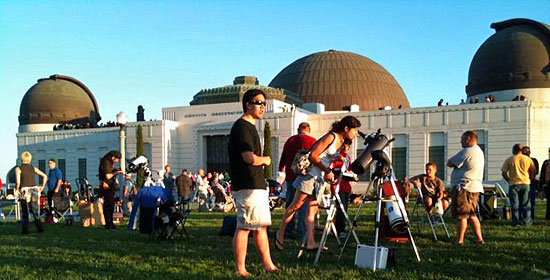
The Griffith Observatory's "star parties" start in the daytime but end up revealing mysteries of the night sky.
About a mile and a half from the Hollywood sign, there’s a place where you can party with the stars. And while you probably won’t see Michael Keaton or Tim Burton there, you might catch a glimpse of Betelgeuse.
The Griffith Observatory’s “Star Parties” offer a free peek at the universe through a variety of telescopes, including a powerful model with a 26” mirror. The first star party of 2012 takes place Saturday, January 28, from 2 p.m. to 9:45 p.m.
Bob Alborzian of the Burbank Sidewalk Astronomers said most people who come to the parties have never looked through a telescope.
“A lot of us take this universe and our time for granted,” he said. “The objects we see live for billions and billions of years. Our lives don’t even compare.”
Alborzian, his fellow Sidewalk Astronomers and the Los Angeles Astronomical Society provide extra telescopes for the events and set up a kids’ corner to get youngsters involved. The groups are dedicated to bringing their passion for astronomy to the general public, and their ranks include employees of NASA and Jet Propulsion Laboratory. In addition to star parties, they set up free events for area schools. (Make a request via the Night Sky Network if you want them to come to yours.)
Star Parties at Griffith Observatory began about 25 years ago. They were inspired by John Dobson, a Hollywood resident who founded Sidewalk Astronomers and invented the Dobson telescope, a cheap but powerful device that helped bring astronomy from observatories to back yards.
What can be seen at a star party depends on what’s in the sky at the time. This month, Venus and Jupiter will be visible, along with less-known galaxies and star systems. The telescopes there allow amateur astronomers to see details like Jupiter’s many moons, rings and the Great Red Spot. Our own moon is among the most popular sights. Later this year, special star parties will be held to view celestial events like the solar eclipse on May 20 and Venus’ transit of the Sun on June 5.
The events attract about 700 people through the course of the day said Mary Brown, an employee of Griffith Observatory and president of the Los Angeles Astronomical Society. They are held outdoors, so visitors are welcome to bring a picnic or take a hike. Dogs are welcome, too. Griffith Observatory is located at 2800 East Observatory Avenue in Los Angeles.
Posted 1/25/12
Bowl rides go up, but not for all
January 24, 2012
Concert-goers planning to use the Hollywood Bowl’s popular park-and-ride service this season, take note:
Buy your park-and-ride tickets in advance and you’ll pay the same $5 roundtrip fare that’s been in effect since 1995.
Those who wait to purchase their tickets at boarding time won’t be quite as fortunate.
The Board of Supervisors on Tuesday approved the first fare increases for the program since 2009. Roundtrip park-and-ride service will go from $8 to $10 for those who purchase at the park-and-ride lots. Roundtrip service from four shuttle lots—two on Ventura Boulevard and the others at Hollywood and Highland and the L.A. Zoo—will increase from $4 to $5.
In either case, patrons will avoid the Bowl’s famously tough stacked parking and will be able to travel with a clear environmental conscience in buses powered by clean diesel or alternative fuels.
And they’ll be in good company. Ridership on the park-and-ride and shuttle programs hit a 10-year high during the 2011 season, with nearly 31% of all patrons using the service. In all, patrons from all over the county logged 422,612 one-way trips by shuttle and park-and-ride last year.
Posted 1/24/11




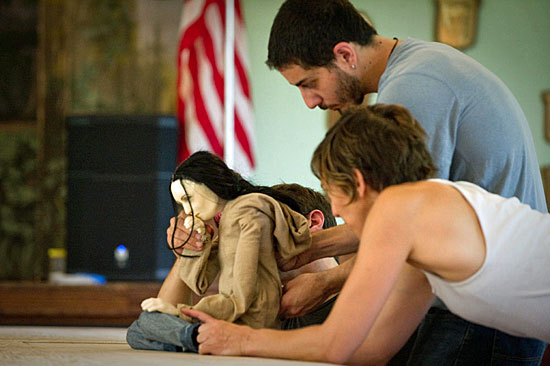

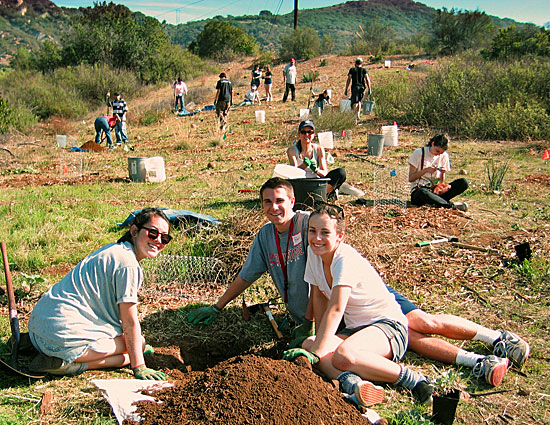
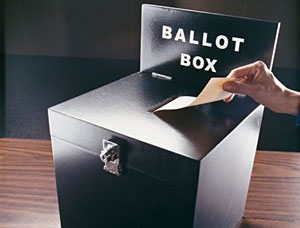
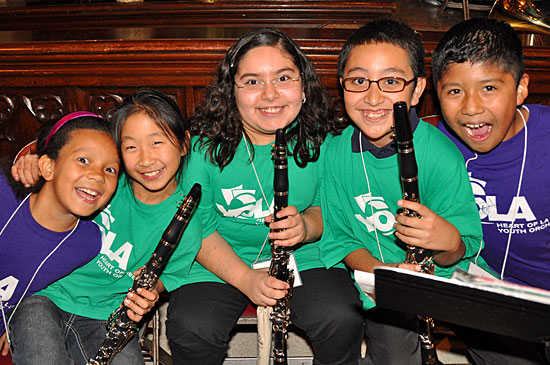
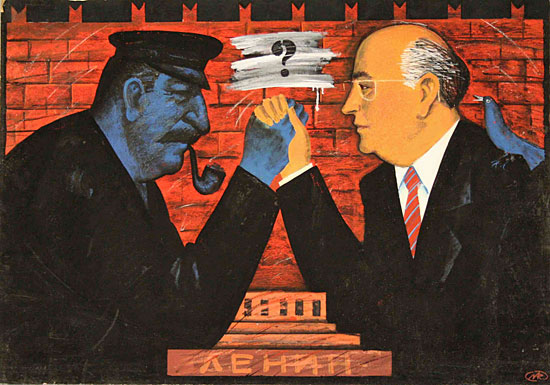
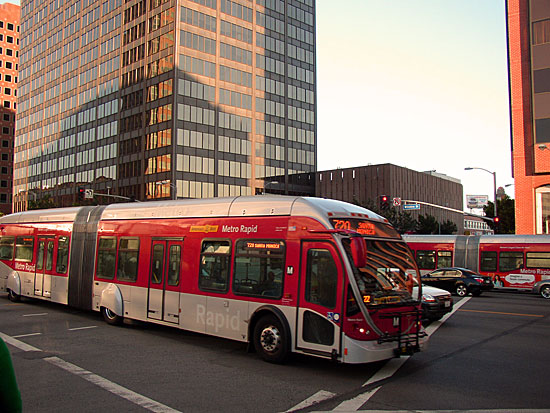
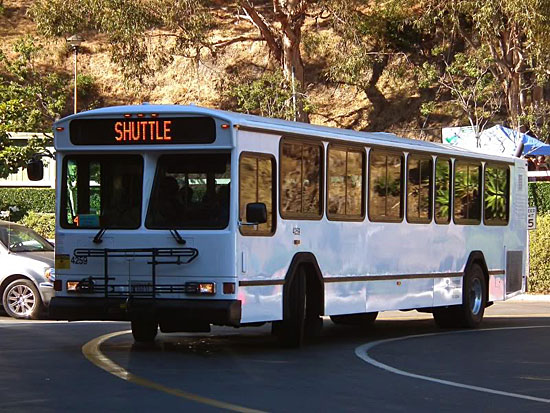





 Check for the latest closure information
Check for the latest closure information








